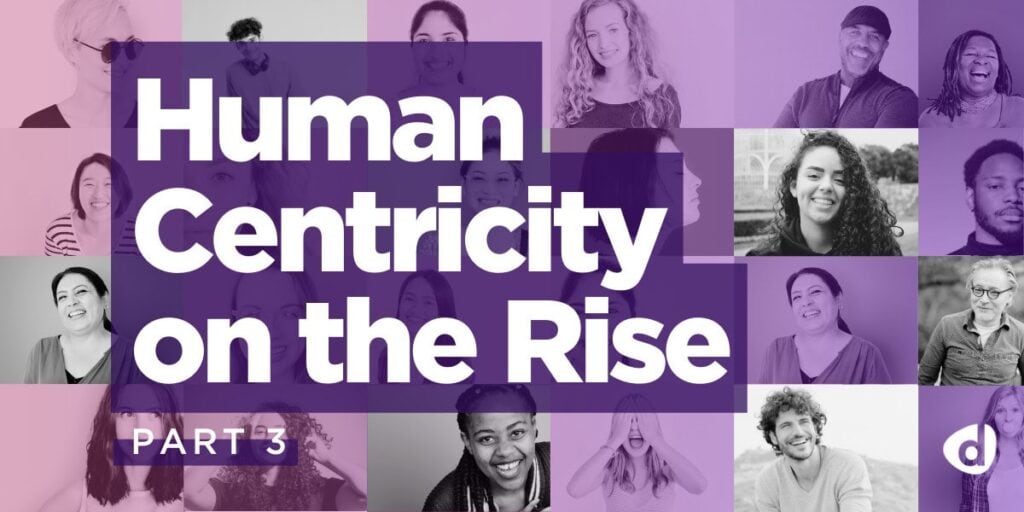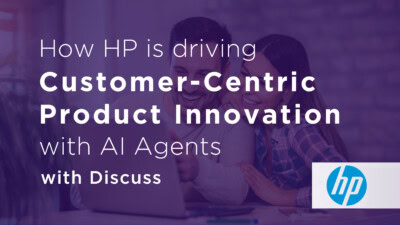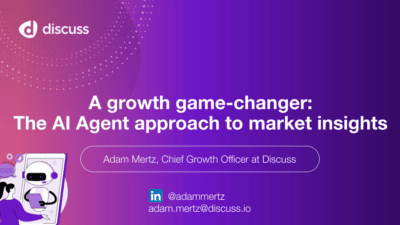Empathy Blindness: The Cost of Not Being Consumer-Centric

Bain & Company found that organizations that effectively implemented consumer-centric strategies outgrew their market competitors by 4% – 8%. Failing to be consumer-centric means giving up 4% market share.
The business world seems to be suffering from a major case of empathy blindness with a large disconnect between what companies think they deliver and the reality of the customer experience.
The power of consumer-centricity unlocks a world where consumer understanding fuels every business move and customer voices are embedded in nearly all business decisions and core processes. Unfortunately, the reality is most companies are missing the mark for two primary reasons:
- Companies don’t have the proper tools or processes to understand their customers.
- Valuable consumer insights often go to waste because they’re not used strategically.
The Boston Consulting Group’s article, “The Introverted Corporation,” exposes the reality that many companies say they are consumer-centric but are failing to put it into action. The article references a study involving more than 90 companies that found only one in five companies are using consumer insights strategically.
In this blog, learn why failing to be consumer-centric is hurting your business and what to do to bridge the empathy gap.
The Cost of Not Being Consumer-Centric
The empathy gap is illustrated by Bain & Company’s “80:8 rule.” Across nearly 400 organizations, they found that 80% of companies believed they delivered a superior customer experience. However, the reality painted a different picture – only 8% of their customers agreed. This massive disconnect highlights that companies are not effectively walking in their customers’ shoes.
Not to mention, it’s also causing major financial implications. A large-scale 2018 study by M&C Saatchi, found that the empathy deficit costs the average brand over $300 million in lost revenue every year. This cost is consistent across various markets, including the UK, US, Germany, and China.
The study also highlights how a lack of empathy is damaging customer relationships, finding that 18% of consumers had stopped using a brand in the last 12 months because of the gap between marketing and experience, with 32% believing the gap is widening.
This study underscores an important point: empathy is not just good practice, it’s good business. By placing consumer understanding into action, companies can reduce customer churn and make better decisions about their products, marketing, and overall customer experience, ultimately boosting their bottom line. This is the real-world impact of investing in being truly consumer-centric.
The Power of Consumer-Centricity: How to Bridge the Empathy Gap
The good news? Empathy can be learned. Here are practical steps businesses can take to close the empathy gap and cultivate a consumer-centric approach:
1. Get creative in how you connect with your customers to understand their needs and motivations.
We all know talking to customers is key, but in today’s fast-paced world, traditional methods might not cut it. Think outside the box!
Look beyond traditional methods: Utilize online qualitative methods or mobile research to connect with your target audience on their terms. Mobile qual allows for more frequent, genuine, and convenient interactions where participants can share their thoughts and behaviors straight from their phones, while you gain valuable insights into their real-world experiences.
Scaling global consumer centricity: The digital age brings a powerful tool: global reach. Live webcam interviews or asynchronous surveys can connect you with a wider audience, fostering deeper human centricity across the globe.
2. Embed customer voices into your strategic decisions.
True consumer-centricity goes beyond marketing campaigns. It’s about infusing real human insights into every major business decision. Imagine basing your strategy on what customers truly think and feel, not just data points on a spreadsheet. Here are some ways you can do just that:
- Develop Customer Personas: Create detailed profiles representing your ideal customers, incorporating their needs, motivations, and pain points. Use these personas to guide strategic decision-making.
- Break Down Silos: Move beyond just sales and marketing utilizing customer insights. Involve product development, operations, and leadership teams in customer research findings.
- Leverage a Customer Insights Hub: Establish a central repository for all customer feedback (from interviews to insights all under one roof) – accessible to all departments for strategic decision-making.
- Customer Impact Assessments: For major strategic decisions, implement a customer impact assessment. Analyze how the decision will affect customer experience, satisfaction, and loyalty, while leveraging your consumer insights to drive the decisions. Check out this template from Atlassian as a starting point.
3. Implement tools that make it easy to connect with your customers and turn insights into actionable strategy.
While gathering customer feedback is crucial, the real power lies in transforming it into insights that drive better business decisions. This requires tools that streamline not just the data collection process, but also the analysis and application of customer voices.
- Streamline Customer Connection with an All-in-One Solution: Consider an all-in-one platform to simplify every step of your research process where you can launch studies fast, connect with your customers in a variety of methods (live, asynchronous, etc.), and analyze insights to gain a holistic, “always-on” understanding of your audience – all within a single platform.
- Deeper Insights and Faster Decisions with GenAI: Leverage purpose-built GenAI-powered analysis tools to quickly analyze your customer feedback and identify key themes, emerging trends, and pain points in an instant. With the ability to extract insights from interviews that were conducted in different languages, GenAI can also be a valuable tool to unlock the ability to understand your consumers on a global scale – ensuring your products, services, and marketing messages resonate with a worldwide audience.
- Centralized, Global Research Hub: By implementing a global research hub that serves as a central repository for all customer feedback, regardless of the source (human-led interviews, self-paced feedback, or uploaded research) you can ensure everyone across the organization, not just sales and marketing, can easily access real-time customer insights and integrate them into their decision-making processes.
- Leverage Data Visualization Tools: Traditional static presentations, like a simple report, can leave stakeholders feeling detached from the consumer data. Using data visualization tools can bridge this gap to help you:
- Easily identify and showcase key insights from your interviews.
- Ensure strategic decisions are guided by real human needs and emotions, not just cold data points.
Remember: Throwing money at customer insights won’t automatically make you consumer-centric. The key lies in having the right tools and capabilities to translate customer voices into actionable strategies. True consumer-centricity requires integration of insights into every layer of business operations—from marketing to product innovation to customer support.
Conclusion
The bottom line? Ignoring your customers is a recipe for lost revenue and a disconnect from the very people who keep your doors open.
Embrace consumer-centricity to build stronger customer relationships, brand trust, and a healthier bottom line. Investing in empathy isn’t an expense, it’s an investment in your company’s future. By following these strategies and bridging the empathy gap, you can turn customer insights into real business growth.
The All-In-One Platform Driving Next Gen Consumer Centricity
At Discuss, we believe in the transformative impact of consumer centricity for businesses. Trusted by the leading Consumer Insights, CX, and UX professionals worldwide, Discuss tackles the historical qualitative research challenges – getting in-depth insights quickly and sharing those insights across teams with ease.
With its global research hub, next gen technology, and unlimited research model, Discuss enables businesses to make more informed strategic decisions faster than ever before. Talk to an expert today to transform your insights into powerful, consumer-centric strategies that drive action and deliver results.
Ready to unlock human-centric market insights?
Related Articles

Why Your Business Needs a Multicultural Marketing Strategy
A recent Ad Age article highlights a notable trend that some companies are taking a stand to keep DEI at…
A recent Ad Age article highlights a notable trend that some companies are taking a stand to keep DEI at…

Human Centricity on the Rise: Navigating the New Era, Part 3
How to unlock human centricity at scale with a key mindset shift In Part 1 of this blog series, I…
How to unlock human centricity at scale with a key mindset shift In Part 1 of this blog series, I…

3 Ways to Design for Empathy & Human Centricity
By Adam Mertz, Chief Growth Officer at Discuss Introduction I recently had the opportunity to moderate a compelling discussion between…
By Adam Mertz, Chief Growth Officer at Discuss Introduction I recently had the opportunity to moderate a compelling discussion between…




